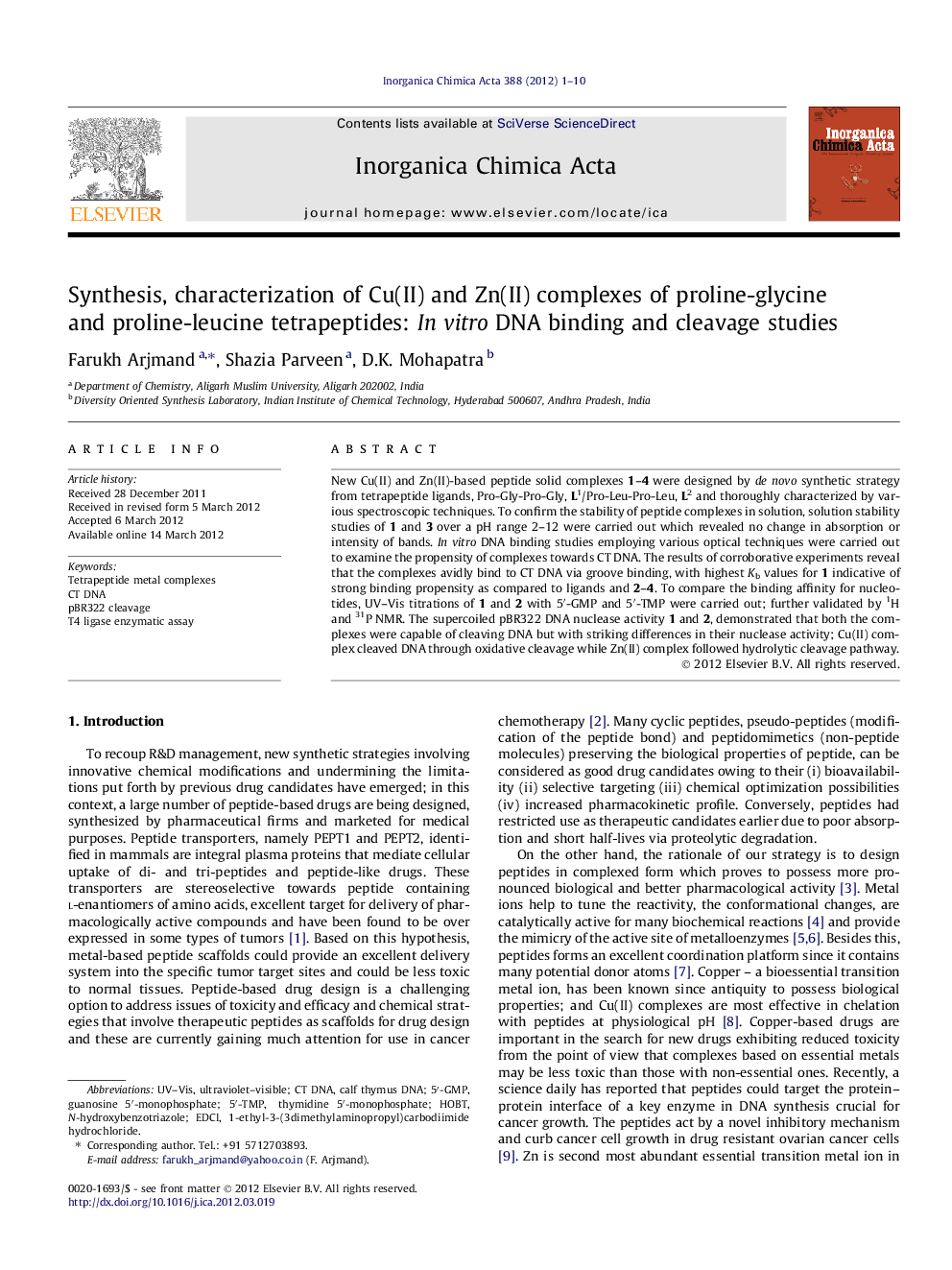| Article ID | Journal | Published Year | Pages | File Type |
|---|---|---|---|---|
| 1307277 | Inorganica Chimica Acta | 2012 | 10 Pages |
New Cu(II) and Zn(II)-based peptide solid complexes 1–4 were designed by de novo synthetic strategy from tetrapeptide ligands, Pro-Gly-Pro-Gly, L1/Pro-Leu-Pro-Leu, L2 and thoroughly characterized by various spectroscopic techniques. To confirm the stability of peptide complexes in solution, solution stability studies of 1 and 3 over a pH range 2–12 were carried out which revealed no change in absorption or intensity of bands. In vitro DNA binding studies employing various optical techniques were carried out to examine the propensity of complexes towards CT DNA. The results of corroborative experiments reveal that the complexes avidly bind to CT DNA via groove binding, with highest Kb values for 1 indicative of strong binding propensity as compared to ligands and 2–4. To compare the binding affinity for nucleotides, UV–Vis titrations of 1 and 2 with 5′-GMP and 5′-TMP were carried out; further validated by 1H and 31P NMR. The supercoiled pBR322 DNA nuclease activity 1 and 2, demonstrated that both the complexes were capable of cleaving DNA but with striking differences in their nuclease activity; Cu(II) complex cleaved DNA through oxidative cleavage while Zn(II) complex followed hydrolytic cleavage pathway.
Graphical abstractSynthesis of tetrapeptide complexes 1–4.Figure optionsDownload full-size imageDownload as PowerPoint slideHighlights► New {Cu(II) and Zn(II)} metal-based peptide solid complexes. ► In vitro DNA binding studies of complexes were carried out by various optical methods. ► The interaction studies revealed that the complexes bind to the DNA preferentially via groove binding. ► Complexes 1 and 2 displayed efficient pBR322 DNA cleavage activity. ► Complex 1 cleaves DNA through oxidative pathway, while complex 2 follows hydrolytic pathway.
